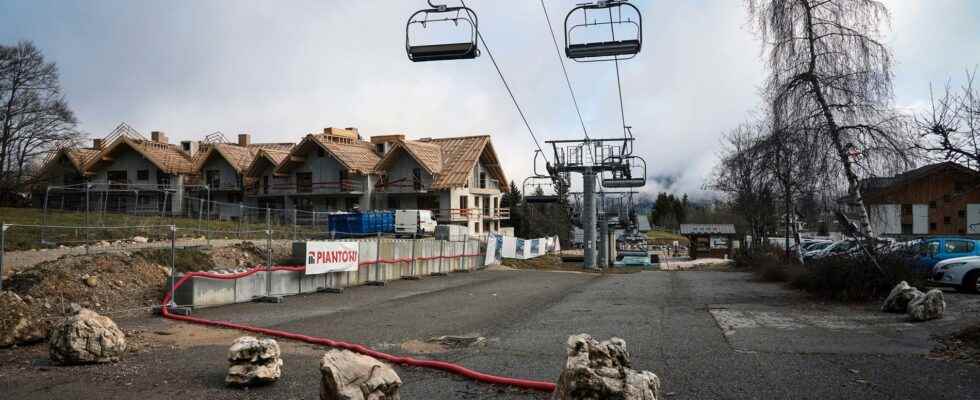Published: Less than 30 min ago
full screen
Next
The lift system is closed in La Féclaz near Chmabéry in the French Alps. The picture is from January 5.
1 of 2 Photo: Laurent Cipriani/AP/TT
Warsaw 18.9. Javorník 19.6. Bilbao 25.1. The extreme temperatures of the New Year’s weekend in Europe should be seen in a larger perspective, say climate scientists.
– If you look at the whole, you see a pattern: the weather extremes are becoming more serious, says Professor Michael Tjernström.
January records were smashed a few days ago when a heat wave swept across European cities. National records were set in eight countries and regional records in another three.
In Bilbao, Spain, the temperature was 10 degrees above normal with a peak of 25.1 degrees.
In Warsaw, the temperature was 18.9. In Javorník in the Czech Republic at 19.6 and in Eindhoven in the Netherlands at 16.9.
The mild — even warm — weather came as North America was hit by a cold snap with severe storms that caused more than 60 deaths.
– This type of exchange of cold air to the north and warm air to the south happens every now and then. It is clear that if this very hot air from Africa comes up in November, not many records will be broken. But if it comes up in December or at the turn of the year, it will be more spectacular, says Michael Tjernström, professor of meteorology at Stockholm University.
Look at the big picture
It is too early to say whether the heat wave is due to climate change, that conclusion cannot be drawn right now without a comprehensive, careful analysis, he points out.
At the same time, the high temperatures must be put into their increasingly clear context.
– If you go to the Zorn Museum in Mora and look at paintings, you don’t stand five centimeters from the painting and look at a white sedge that he painted so beautifully, but you take five steps back and look at the whole, says Tjernström.
New Year’s heat wave, the longest and worst drought in the Horn of Africa, torrential rain and floods in Pakistan, forest fires in Portugal, France, Italy and Romania, heat wave and drought in the UK. They are all events that occurred within a year.
– If you look at the whole, you see a pattern: the weather extremes are becoming more serious. There are a handful of events almost every year that make one recoil, he says.
Ski resorts closed
The UN’s climate panel IPCC states that certain individual extreme weather events, above all heat and to some extent precipitation, are due to climate change. Other events such as tropical hurricanes can be more difficult to derive.
The dilemma is to pedagogically explain the situation the world is in when individual phenomena cannot be immediately linked to the climate, according to Tjernström.
Mikael Karlsson, docent in environmental science at Uppsala University, points out that you can see that heat waves have increased in number since the 1950s.
– Regardless of whether we manage to reach the 1.5-degree target, the 2-degree target or end up at 3-4 degrees, the heat waves will only increase. It is very clear.
The cost to society will be enormous, he continues. This is not least evident when ski resorts in both the Alps and the Pyrenees are forced to close – just weeks after the slopes opened.
“Never experienced”
In the Italian Tour de Ski resort of Val di Fiemme, the temperature is around nine degrees when TT speaks with Silvia Vaia, media officer who worked in the organizing committee for 17 years.
– I have never been involved in a situation like this in my life. I am quite concerned about this discipline and the future of the sport. This is something we have never experienced in the Alps before, she says.
The ski facility is to host the Olympics in 2026.
– It feels risky because we are making large financial investments. We are renovating our entire ski resort for the Olympics and we will spend millions of euros on it, and what will happen if it gets hotter and hotter?
Hotel receptionist Anna Ceschini is also concerned.
– The only thing that matters in Val di Fiemme is snow. Right now we are lucky that there are tourists, but if it’s like this in ten years, there won’t be any left.
Farmer in Bangladesh
Mikael Karlsson explains what other consequences the rising temperatures have.
– It is clear that if we have droughts more often, it will hit agriculture hard in the world. Storms and hurricanes hit forestry and infrastructure hard, and heat waves affect people’s health.
He has also researched climate leadership and climate denial and is struck by politicians’ inability to point to other benefits of reducing emissions – such as better public health in the form of cleaner air and greater biodiversity.
– People are becoming more and more aware of climate change and understand that what the scientists say is true. It is clear that extreme weather, which is scientifically well described as having increased in recent decades, means that climate change is perceived in a different way.
– Previously, climate change was understood to be about the sea rising in 50 years for a farmer in Bangladesh. That perception was a weaker perception for taking measures, says Mikael Karlsson.
